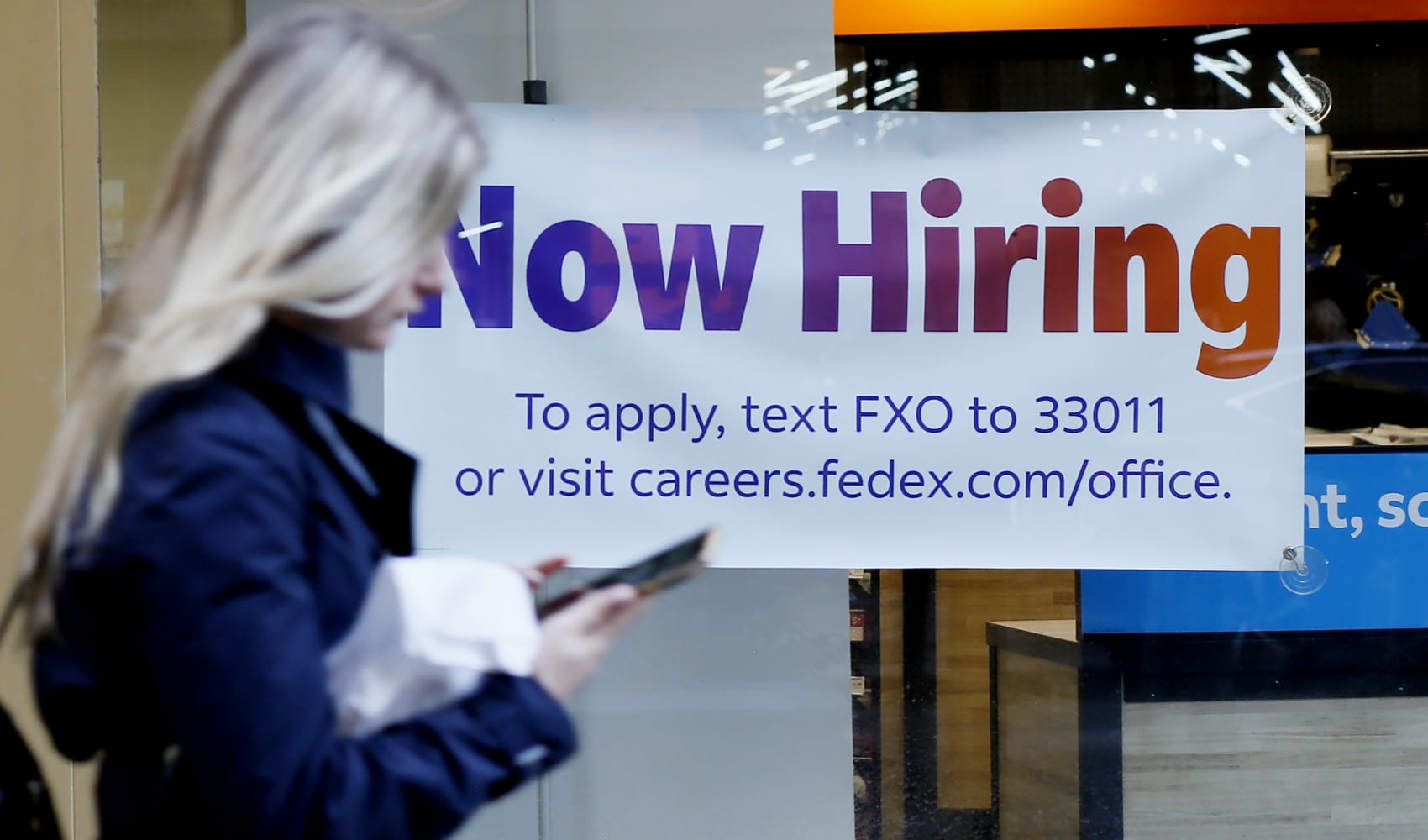
In this very confusing and unusual macroeconomic environment, I offer one piece of advice: just follow the labor market. We can't be in a recession if the labor market is strong, no matter what the GDP number is. And we also can't beat inflation and have the Fed back off tightening until the labor market cools significantly.
It does not matter if "real" GDP ends up negative in the first and second quarter of this year, in terms of the business cycle. Those reads look terrible because of inflation, not because of weak demand. Nominal GDP has been surging for almost two years now, to such a degree that it's outpacing the economy's capacity and resulting in higher prices instead of greater real output. Real GDP is tanking because the economy has been overheating.
The clearest evidence of this is in the labor market. We added 1.6 million jobs in the first quarter, while inflation-adjusted "real" GDP declined by an annualized 1.6%. Normally in true economic downturns, we are shedding hundreds of thousands of jobs each month. Instead, even in April and May hiring has proven remarkably strong, with gains of around 400,000 per month--stronger than almost any months we'd seen in the entire expansion before the pandemic hit.
And all of this has occurred while the Fed has sucked a massive amount of liquidity and wealth out of the financial system; $8.5 trillion from the S&P 500 since January, and a couple trillion more from crypto. And yet what did we learn this morning? Weekly new jobless claims actually fell last week, to 231,000--a historically healthy and normal level. Nothing here suggests the layoffs we've started to see in tech and crypto are emblematic of a broader labor market slowdown.
Get South Florida local news, weather forecasts and entertainment stories to your inbox. Sign up for NBC South Florida newsletters.
And we actually need a labor market slowdown to finally stop the economic overheating that's resulted in price spikes, supply shortages, and labor issues that are crippling the travel sector now as it was supposed to have its best summer ever. Inflation in 2023 will not be a story of commodity prices, but the cost of services-- especially essential, unavoidable services like healthcare, where labor costs are fast accelerating.
Inflation in that sense risks becoming more pernicious, more regressive, and less obvious to the naked eye than in food and energy costs if it continues to spread throughout the service sector on the back of the tight labor market. Remember, we still have more than 11 million job openings against six million unemployed workers. Fed Chair Powell is basically trying to destroy openings (instead of actual jobs), in an effort to slow the wage gains that are pushing up the cost of everything.
The distinction might seem subtle, but there's a huge difference in getting wage pressures to fall to around 4% from the upwards-of-5% figures we've been seeing in the first half of the year. Four percent puts us more on track to hit the Fed's inflation target, and suggests the economy is normalizing. Still, it won't be the readings this month or next that settle the issue, but rather where we are three to six months out.
Money Report
In a nutshell: jobless claims, job openings, hours worked, average hourly earnings...these are the most critical business-cycle metrics to follow in the back half of 2022. Beating inflation has to mean some kind of labor market slowdown (or else it will require even more Fed tightening), and the magnitude of the slowdown will be the real tell on the recession question in the months ahead.
As a side note, it makes sense that ADP, which issues its own monthly private-sector jobs report, is taking this moment to halt releases in order to "retool" its survey, which has a woeful track record in predicting the official jobs release from the U.S. government. With so much at stake on the labor market, it's a make-or-break moment for the company to determine the best usage of its own data, or risk irrelevance.
So yes, it was encouraging to see smaller monthly increases in the Fed's preferred inflation gauge this morning, and the reset of commodity prices and inflation breakevens since late spring. But now, it's up to the labor market to fill in the rest of the story.
See you at 1 p.m!
Kelly






